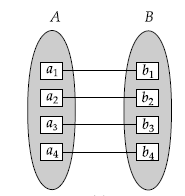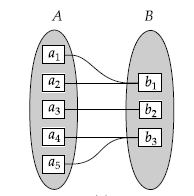Mapping Cardinalities / Types of Relationships:
Mapping cardinalities or cardinality ratios express the
number of entities to which another entity set can be associated via a
relationship set. Mapping cardinalities are most useful in describing binary
relationship sets, although they can contribute to the description of
relationship sets that involve more than two entity sets.
For a binary relationship set R, between entity sets A and B,
the mapping cardinality must be one of the following:
A.
One-to-One (1:1) :
An entity in A is
associated with at most one entity
in B, and an entity in B is associated with at most one entity in A. Such a relationship is called as one
to one relationship.
Fig: One to One relationship
B.
One to Many(1:M) :
An entity in A is
associated with any number (zero or
more) of entities in B. An entity in
B however, can be associated with at most one entity in A. Such a relationship is called as one
to much relationship.
Fig: One to Many relationship
C.
Many to One(M:1):
An entity in A is
associated with at most one entity
in B. An entity in B however, can be associated with any number (zero or more) of entities
in A. Such a relationship is called
as many to one relationship.
Fig: Many to One relationship
For ex: consider
the borrower relationship set. If in a particular bank a loan can belong to
only one customer, and a customer can have several loans, then the relationship
set from customer to loan is one to many.
D.
Many to Many(M:N):
An entity in A is
associated with any number (zero or
more) of entities in B, and an
entity in B is associated with any number (zero or more) of entities
in A. Such a relationship is called
as many to many relationship.
Fig: Many to Many relationship
For ex: if a
loan can belong to several customers (as loans is taken jointly by several
business partners), the relationship set is many to many.




No comments:
Post a Comment